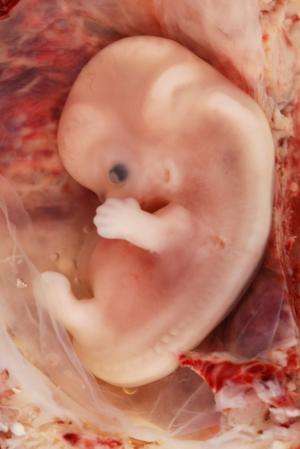Explainer: What are stem cells?

In a paper published in Cell yesterday, scientists from the US and Thailand have, for the first time, successfully produced embryonic stem cells from human skin cells.
That sounds interesting, but what are stem cells and where do they come from?
If you take a limb from a rose tree, and put it in soil, it will grow into a thriving bush.
But you might say: "Plants are special. This won't work with animals." Or will it? If you cut off a lizard's tail, a new tail may grow. A lobster can grow back a lost claw.
There is a special type of flatworm that can be cut in half, again and again hundreds of times, and each half grows back into a full worm.
Similarly, if you cut out half a human liver, it will grow back. The story of Prometheus, whose liver was eaten away by eagles and regrew each day, suggests that the Greeks of ancient times knew about regeneration of organs.
This sort of regeneration is attributed to special cells called "stem cells".
Reprogramming the workers
Most of our cells are like many professional workers – they are hardened in their ways and can't manage career changes.
Blood cells carry oxygen or fight disease, muscle cells expand and contract to move us around, nerve cells carry signals, skin cells form a protective layer over our bodies, and structures made up of kidney cells filter our blood.
The cells of most organs or tissues are referred to as "terminally differentiated" cells. They have specialised, and many won't divide again. If they are damaged or die they will disappear. This is very important.
Although we feel like we grow a lot after we are born, we really only double in size two or three times and most of our cells don't divide much.
If they did we would be at great risk from cancer – the uncontrolled doubling of cells at the wrong time.
We have a lot of cells and it is important that none of them run out of control.
But some cells can double to renew themselves and can also differentiate and give rise to specialised progeny.
These are the stem cells. We need them to produce new skin to replace damaged skin cells. Similarly, we need them in our guts to replace damaged cells on the surface of our intestines.
Our blood cells also get worn out as they race around our bodies so we have blood stem cells that divide and replace themselves. They also differentiate to form the different types of white and red blood cells we need.
Australian researchers identified stem cells in the breast that can proliferate and form a complete functioning breast. There are also stem cells in the brain and in the heart.
While stem cells tend to be very rare, they exist in many of our organs.

Types of stem cells
The ultimate stem cells are embryonic stem cells.
These cells are found in the inner cell mass of the early embryo and are referred to as "totipotent" since they have the ability to form every cell that is needed in the growing embryo.
They can be extracted from the early embryo and grown in culture dishes.
They can also be genetically modified by the addition of DNA, then injected back into other embryos or into adult animals where find their way into localities that suit them and replace themselves by duplication or differentiate into other cell types that may be needed. For a long time this type of work had been done primarily in laboratory mice.
The techniques in yesterday's Cell paper involved injecting the nucleus from a human skin cell into a human egg (the nucleus of which has been destroyed) then growing the resulting embryo until the inner cell mass cells could be harvested.
The method may still be controversial because it uses unfertilised eggs, but many people will regard it as preferable to using human embryos. And there are other interesting methods for making stem cells.
Somatic cells to stem cells
It is also possible to convert skin cells, and indeed many different terminally differentiated cells, back into what are called "induced pluripotent stem cells" or iPS cells.
One uses the "magic four" or "OKSM" set of DNA-binding proteins that govern normal stem cell biology:
- Octamer-binding transcription factor 4 (OCT4)
- Kruppel-like factor 4 (KLF4)
- SRY (sex determining region Y)-box 2 (SOX2)
- cellular myelocytomatosis virus-like gene (MYC)
In 2012 Shinya Yamanaka won the Nobel Prize for discovering how to convert normal cells into iPS cells using the OKSM regulators to turn on and off the right genes and convert skin cells into stem cells.
Researchers are continuing to investigate whether iPS cells have the same therapeutic potential as embryo derived stem cells.
It is hoped that stem cells may provide therapies for people suffering from degenerative diseases.
Skin cells could be taken from a patient, converted to stem cells, and then these could be injected back into the damaged organ.
Ideally, they would repopulate the damaged organ with new cells.
So why doesn't this happen in normal biology? Why aren't our own heart stem cells busy trying to repair broken hearts?
They may be but our natural supply of stem cells is limited and presumably insufficient to tackle severe disease.
So why don't we just have more stem cells in our bodies?
The down side of having too many stem cells may be cancer.
Stem cells share a number of features with cancer cells – both are able to self-renew and double without limit.
One theory about cancer holds that the disease most often originates not from terminally differentiated cells but from one of the small number of stem cells in the relevant tissues.
The obvious concern about using stem cells for therapy is that injecting too many could increase the chances that some of these cells would proliferate beyond control, and ultimately give rise to cancer.
Stem cell therapy for regenerative medicine is an exciting idea.
Every day we are learning more about stem cells – how to purify or make them, and how to grow them in culture and direct them down particular pathways to repopulate different organs.
Future research will assess the risks and how effective they can be in experimental systems and ultimately in human patients.
Journal information: Cell
Source: The Conversation
















